It’s just past 2 a.m. and I’ve spent the past few hours trying to self-soothe with late-night comedy clips on YouTube. Watching John Oliver’s stark take on COVID-19 this weekend was far from soothing, but powerful viewing nonetheless.
It’s just past 2 a.m. and I’ve spent the past few hours trying to self-soothe with late-night comedy clips on YouTube. Watching John Oliver’s stark take on COVID-19 this weekend was far from soothing, but powerful viewing nonetheless.
We caved and got an early birthday gift for the tween when we bought the download for the Pokemon game she’s been wanting. We figure on giving her a pass tomorrow on structuring some makeshift learning this week, which is effectively an extra lost week of school thanks to our friend COVID-19.
We’re not going to be massive hardasses about learning this week; I figure on time for reading, outdoor time, and writing both Pokemon fan fiction and a memoir of the dog. And maybe some education video. We’ll play it by ear.
Maybe it’s a good thing I left Southern California more than 20 years ago: “Angelenos cope with coronavirus ‘pandemonium’ by buying craft supplies, weed and guns.”
I admit I was wary of voting another billionaire in office two years ago, but Illinois Gov. J.B. Pritzker has been just an outstanding leader during this coronavirus crisis.
Glad we did the early voting thing before the Illinois primary on Tuesday. Looks like other area voters did the same.
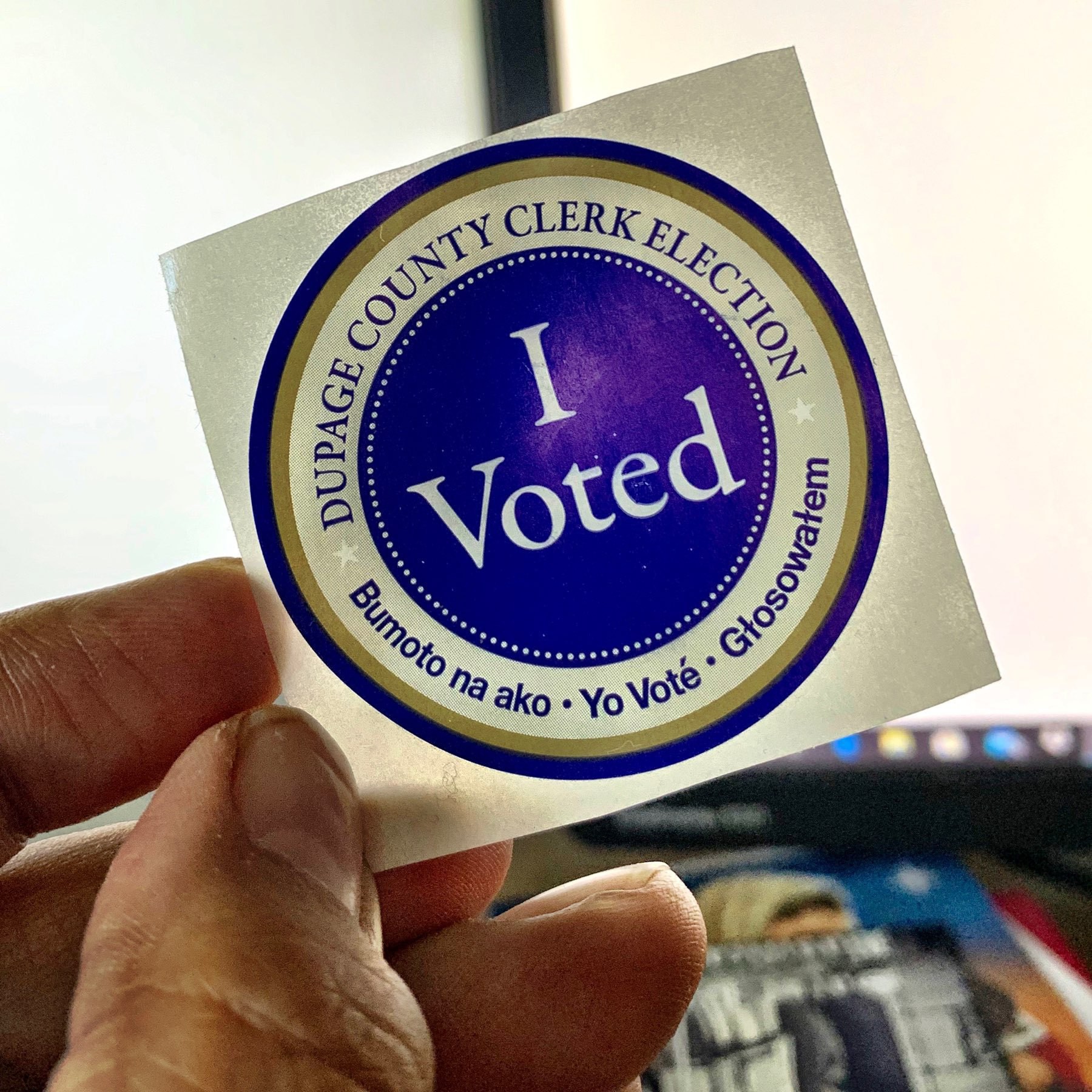
Followed along with the vigil Mass live-streamed this afternoon from Holy Name Cathedral in Chicago. I may be better focused when I pray with a radio Mass and read the Liturgy of the Word with F tomorrow morning.
Sigh. It’s gonna be a long plague.

Oh, I guess we’re good for a while. Anybody got any canned bean recipes?
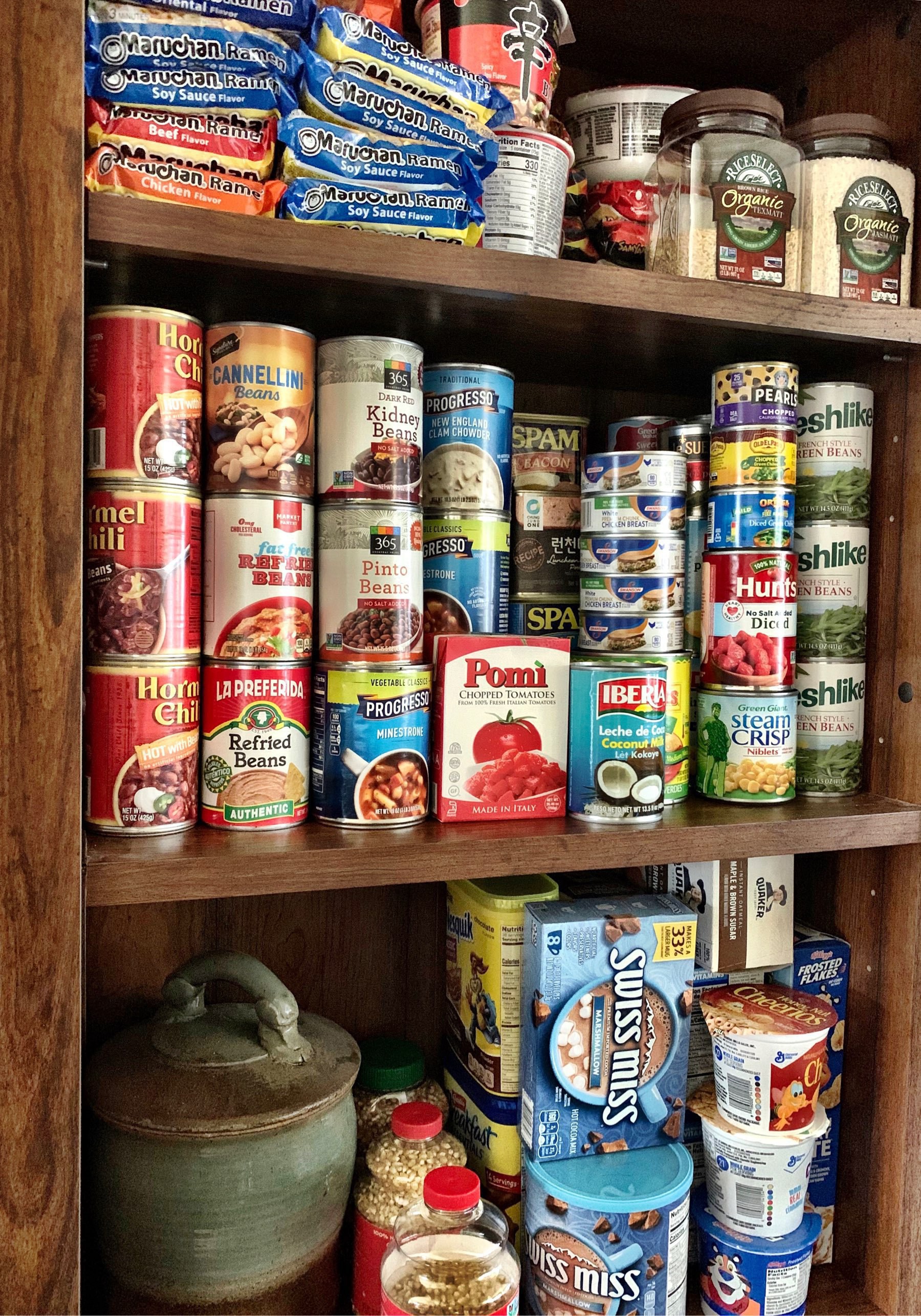
In line with Austin Kleon’s recommendation of news produced for kids, here’s a great “just-for-kids” comic from NPR explaining coronavirus.
“…there is not a standard definition of what symptoms are associated with {mild, moderate, or severe COVID-19 levels). … Nonetheless, there are some preliminary definitions that can be helpful in understanding the range of symptoms.”
We called our local breakfast hangout to make sure it was still open. It was. So, we headed over. Typically, on a Saturday morning, it’s bustling; when we got there, there were a few people scattered over two or three tables. The waitress said it was slow yesterday, too.
Thankfully, by the time we left, folks were seated at maybe five tables, with another party coming in.
We worry about our neighborhood businesses, especially small independent places, in this self-quarantine age. I saw a great idea on Twitter:
If you can afford to, please buy a gift certificate from a local shop/restaurant/small business to help them weather the cash crunch most are experiencing to get through this.
We don’t anticipate heading out much more this weekend; I need to clean the house anyway in anticipating of working from home and an extended spring break for the tween. But I may pick up a couple of gift certificates, just for the heck of it.
“…despite arriving with a pages-long résumé, Nickel Creek is still popularly thought of as the trio’s debut — perhaps because, in retrospect, everything about it seems to signal a new beginning.”
“Ice is part of what makes the Great Lakes, the Great Lakes. It provides us with a sense of place. We expect to see ice every winter. And when we don’t see it, we are suddenly living in a different place.”
This morning’s powerful headline.
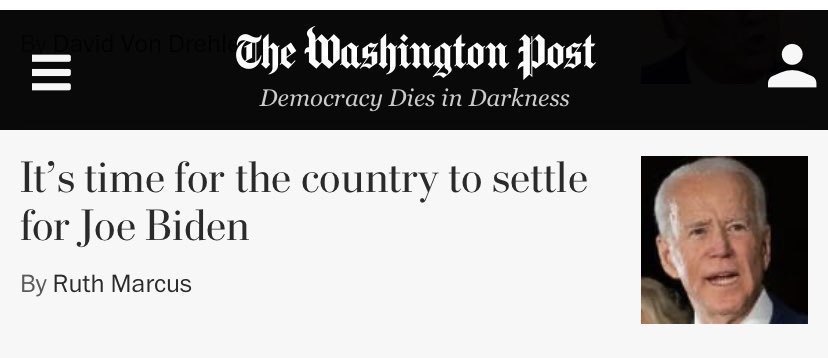
There are terrible takes, and then there are especially terrible right-wing takes on coronavirus.
At the moment, we are a two-parish family living among three dioceses: I attend Roman Catholic Mass in the Archdiocese of Chicago, I take my daughter to an Episcopal Diocese of Chicago parish where she is able to receive Communion, and we live within the boundaries of the Roman Catholic Diocese of Joliet.
As of this writing, the Chicago archdiocese has suspended public Masses until further notice; our Episcopal parish reportedly is canceling services over the next three Sundays, and the Joliet Catholic diocese is suspending public Masses this weekend. So, I have Saturday afternoon off (I attend the vigil Mass at my Roman Catholic parish) and get to sleep in Sunday. There is always spiritual Communion, yes, but I’d rather be at church.
Meanwhile, we just learned that the middle schooler is getting an extra week of spring break starting next week; when she returns to school, she will be doing the e-learning thing for at least a week. I actually had to pick her up from the bus stop (which is barely a block from our house) because she had to lug her school-issued Chromebook AND a big bag of stuff out of her locker in addition to her backpack (with a zipper that broke today) and lunch bag.
And then, as mentioned before, I’m under orders to work from home.
I’m not really liking this New Normal business.
Working from home officially mandatory for me. School district had an “emergency late-start day” today to give teachers time to prepare for remote learning. We’re making sure the middle schooler brings home her school-issued Chromebook (and charger) today, just in case.
So, the husband and I hit two separate Walmarts on the way home from our respective workplaces and joined the panicky masses in stocking up for the possibility of widespread forced “self-quarantining.” His cart is the one with the giant bottle of Evan Williams bourbon.
Shelves were swept clean of pasta, canned beans, and Spam. I couldn’t find yeast and flour to save my life. But I did get 15 pounds of potatoes, more than a dozen boxes and pouches of rice and noodle mixes, and enough beef jerky to reconstruct a steer.
Shopping for the coronavirus apocalypse was one of the more disconcerting, surreal experiences of my life. And the whole time, David Byrne kept me company in my head.
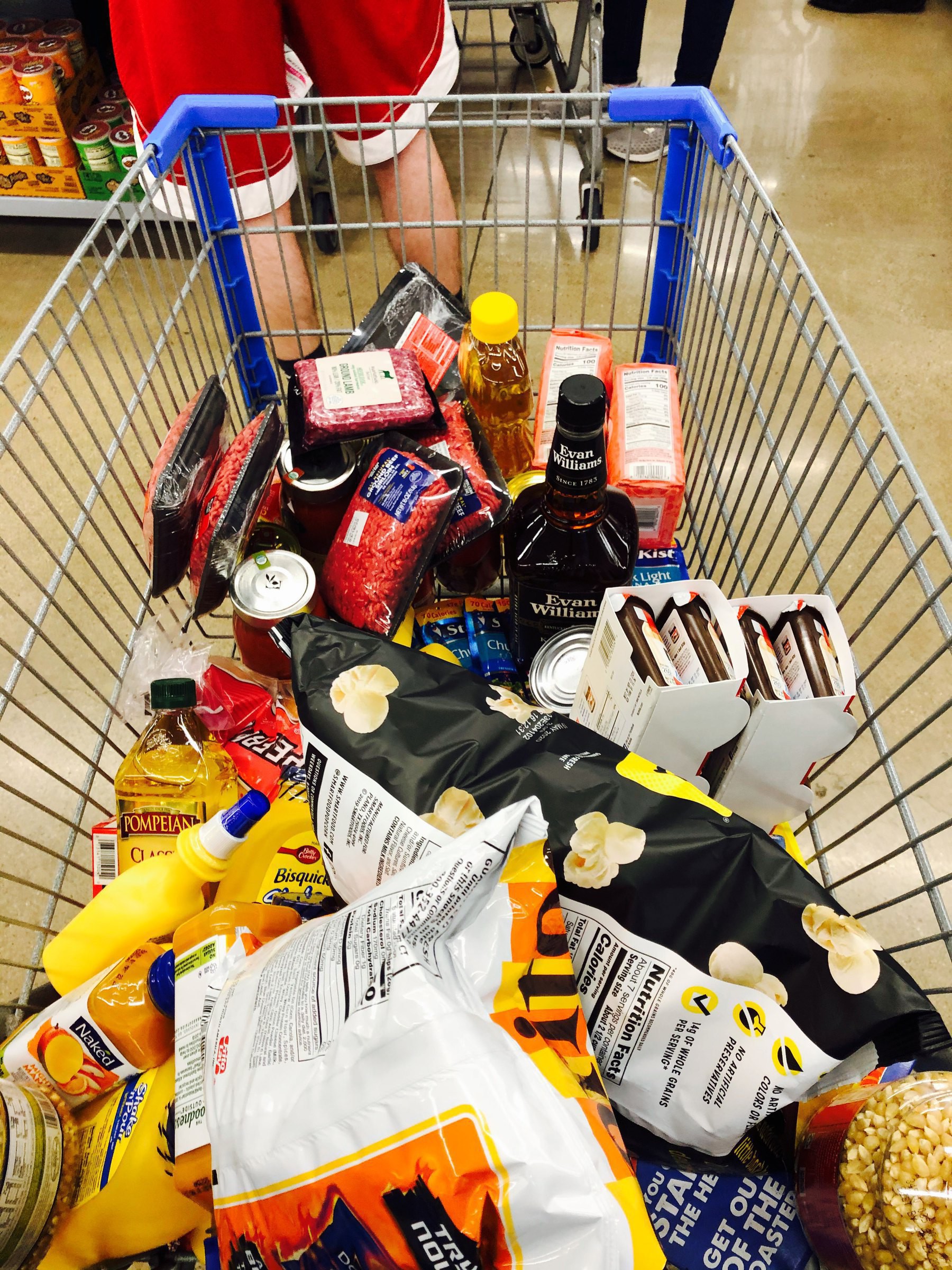
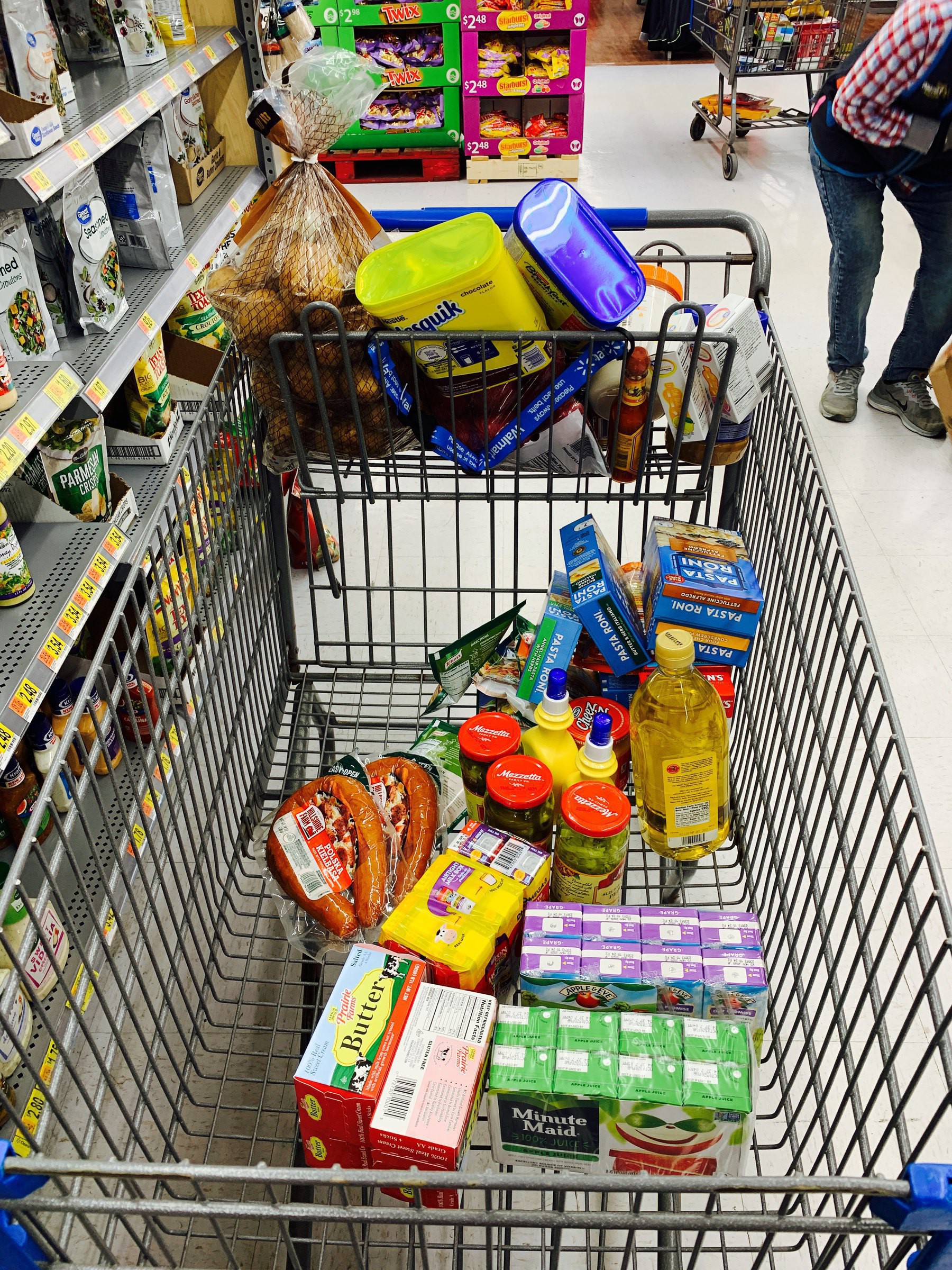
Grateful for kind colleagues who encourage birthday celebrations well after one’s actual birthday.

One benefit from all this pandemic business, if you like the stuff (and I do): Lobster prices are plummeting.
Addicted to coronavirus news? “When there is a lot of ambiguity and a lot of uncertainty, people are drawn to the media. It’s a cycle that is very hard to break out of.”
(Here’s a related article from our local hospital on managing coronavirus anxiety.)
You know this coronavirus business is serious when Chicago postpones its St. Patrick’s Day parades.
Always alarming when a new purchase comes in the mail with this sticker on it.

So, if Ohio State suspends face-to-face instruction because of coronavirus, does that mean we now have to call it THE coronavirus?
“The boss has made it clear, he likes to see his people fight, and he wants the news to be good,” said one adviser to a senior health official involved in the coronavirus response. “This is the world he’s made.”
I have desperately, and seriously, been trying to give up schadenfreude for Lent. But given the news of late, I am failing miserably.